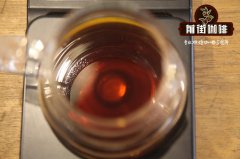Is the blending of coffee beans suitable for hand flushing? What's the difference between a single bean and a mixed bean?

Professional coffee knowledge exchange more coffee bean information please follow the coffee workshop (Wechat official account cafe_style)
Nowadays, there is a trend of integration of coffee, which probably means that espresso is individual, called soe, while hand-brewed coffee beans are also trying to be monotonized. But no matter which way, it is actually in the pursuit of better flavor.
In fact, there is not a very interesting question about a single product. Generally speaking, the definition of a single product refers to the variety of coffee in a single producing area, but the naming of the product is useful for producing areas, varieties, processing plants, manors, and a variety of gaudy names, which are dazzling. But we know that it is generally impossible for a region to have all kinds of coffee, and the processing plant also handles the coffee received from nearby coffee farmers, so the raw bean trade has been completed, but these coffee beans are still emotionally considered to be individual coffee. For example, the popular flower butterfly is a mixture of some Rosa and other varieties of coffee, which is more interesting. Although it is "raw", it is still regarded as a "single product".
What are mixed beans and what are single beans?
Single bean is a single producing area of beans, matching beans is a variety of single producing areas of beans put together, called matching beans.
OK, we'll extend it after we understand the basics.
When setting the cooking plan, we will make it according to the characteristics of beans, such as a bean with full fruit tonality, we need to stimulate her fruit tonality to the maximum extent.
At this time, we need to consider: grinding degree, water temperature, water powder ratio, water content, cooking time, and even the choice of instruments, the influence of techniques.
So, if you are mixing beans, it means that you need your colleagues to calculate the above conditions for a variety of beans in the process of cooking.
At the very least, you have to make sure the baking level is the same.
Otherwise, while the light-baked beans are still preheated, the deep-baked beans are already over-baked, which is obviously not an optimistic phenomenon.
Or because the cell walls of deep-baked beans are brittle and the honeycomb network is large, the degree of grinding is generally not too fine in the process of hand flushing, while the degree of grinding of shallow baked beans is generally not too coarse.
Therefore, the grinding should be separated.
When many people see this problem, their first reaction is yes.
Sure, but are you thinking about the combination of beans, one-time cooking or thinking about the flavor match?
With a rigorous attitude, I don't think one-time cooking is advisable.
I will repeatedly pick out defective beans in a bag of single beans, not to mention matching beans.
But we can do it in a different way, spelling coffee liquid.
For example, you rinse An and B respectively, and then mix the coffee liquid in proportion to get the flavor you want.
This is desirable, the combination of flavor can not be stewed together in ABCD cauldron.
Important Notice :
前街咖啡 FrontStreet Coffee has moved to new addredd:
FrontStreet Coffee Address: 315,Donghua East Road,GuangZhou
Tel:020 38364473
- Prev

The promoter of decaf, the poet Goethe, the origin of decaf.
Professional coffee knowledge exchange more coffee bean information Please pay attention to coffee workshop (Wechat official account cafe_style) Coffee is not available to everyone's body. People with palpitations and insomnia have to drink less coffee because of caffeine. The caffeine in coffee can lead to insomnia, emotional excitement, etc., and thus make people who love coffee but can't drink coffee grieve.
- Next

ESPRESSO Baking Tips to see how Italian concentrate is done.
Professional coffee knowledge exchange more coffee bean information Please follow the coffee workshop (Wechat official account cafe_style) ESPRESSO roasting tips to understand the significance of roasting degree and how they taste after extraction is the key to ensuring the quality of performance in the highest cup. Generally speaking, the deeper the baking, the more acidity decreases and the bitterness increases, but the deeper it is.
Related
- Beginners will see the "Coffee pull flower" guide!
- What is the difference between ice blog purified milk and ordinary milk coffee?
- Why is the Philippines the largest producer of crops in Liberia?
- For coffee extraction, should the fine powder be retained?
- How does extracted espresso fill pressed powder? How much strength does it take to press the powder?
- How to make jasmine cold extract coffee? Is the jasmine + latte good?
- Will this little toy really make the coffee taste better? How does Lily Drip affect coffee extraction?
- Will the action of slapping the filter cup also affect coffee extraction?
- What's the difference between powder-to-water ratio and powder-to-liquid ratio?
- What is the Ethiopian local species? What does it have to do with Heirloom native species?

